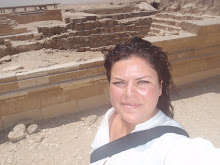In Egypt, chicken is probably the most popular meat item and frying it, panne style, seems to be the favorite preparation style.
Panne in Egypt is a combination of filleting breast meat into thin, flat pieces, marinating them for a MINIMUM (this was a specified point of the recipe by my mother-in-law) of 2 hours and finally, breading the pieces with highly seasoned flour, egg and finely ground breadcrumbs. Egyptians serve this with white rice and cucumber salad, or with pasta, or most commonly in a sandwich with mayonnaise, tomatoe and lettuce on a long roll.

The marinade consists of onion, grated using a basic box grater, tomatoes, grated, garlic, crushed in a press, a mix of toasted and mortared cumin and coriander, chili powder and a touch of olive oil.
Seems like a lot of work just for a piece of fried chicken meat, but with all cooking in Egypt, there is a lot of love and care when cooking for family, friends, guests, anyone. Egyptian hospitality is heartfelt and generous. And the quality of food, and preparation is considered a rank among families.
With all of this talk about fried chicken, I am now drooling and longing for a piece from my favorite fried chicken spot in Los Angeles, Ca, USA.....Roscoe's Chicken! Yep, a longtiime favorite of Angelenos and now of many in California, this version has been my own inspiration in my kitchen. Here is my recipe that guarantees, crispy, well seasoned and supremely delicious fried chicken! Enjoy!

Ingredients
- 1 (4 pound) chicken, cut into pieces
- 1 cup buttermilk
- 2 cups all-purpose flour for coating, plus 1 cup set aside
- 3/4 cup rice flour
- 1/4 cup cornstarch
- 1 teaspoon paprika
- salt and pepper to taste
- 2 quarts vegetable oil for frying
Directions
- Take your cut up chicken pieces and skin them if you prefer. Put the 2 cups flour in a large plastic bag (let the amount of chicken you are cooking dictate the amount of flour you use). Season the flour with paprika, salt and pepper to taste (paprika helps to brown the chicken). Put the chicken in the bag, seal and shake to coat well.
- Dip chicken pieces in buttermilk, a few at a time. Mix the 1 cup flour, 3/4 cup rice flour and 1/4 cup cornstarch with paprika, salt and pepper to taste (paprika helps to brown the chicken). Put the mix into a bag and place the buttermilk dipped chicken in the bag, seal and shake to coat well. Place the coated chicken on a cookie sheet or tray, and cover with a clean dish towel or waxed paper. LET SIT UNTIL THE FLOUR IS OF A PASTE-LIKE CONSISTENCY. THIS IS CRUCIAL!
- Fill a large skillet (cast iron is best) about 1/3 to 1/2 full with vegetable oil. Heat until VERY hot. Put in as many chicken pieces as the skillet can hold. Brown the chicken in HOT oil on both sides. When browned, reduce heat and cover skillet; let cook for 30 minutes (the chicken will be cooked through but not crispy). Remove cover, raise heat again and continue to fry until crispy.
- Drain the fried chicken on paper towels. Depending on how much chicken you have, you may have to fry in a few shifts. Keep the finished chicken in a slightly warm oven while preparing the rest.

